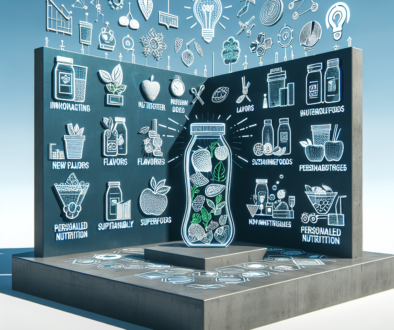The Effects Of Radiofrequency Heating On Type Ii Collagen Formation In The Osteoarthritic Knee
Keywords
Radiofrequency Irradiation Hyperthermia Type Ii Collagen Rabbits For Knee Osteoarthritis Radiofrequency Irradiation Hyperthermia Type Ii Collagen Rabbits
Abstract
Objective To explore the effect of radiofrequency hyperthermia on the expression of type II collagen during the formation of knee osteoarthritis in rabbits. Methods: Fifty-four male rabbits were selected, and their right hind limbs were made into experimental knee osteoarthritis models using the modified Hulth modeling method. After the model was successfully created, the experimental rabbits were randomly divided into the model group, the deer melon polypeptide group and the radiofrequency hyperthermia group. The deer melon polypeptide group was given intramuscular injection of deer melon polypeptide after the model was made. The radiofrequency hyperthermia therapy group was given radiofrequency hyperthermia treatment after the model was made. The model group was not given special treatment after the model was made. On the 7th, 13th and 19th days of treatment, 6 experimental rabbits from each group were sacrificed, and the right medial femoral condyle cartilage was harvested and morphologically scored using the modified Mankins score. At the same time, real-time quantitative PCR technology was used to detect the right side of the experimental rabbits in each group. Type II collagen content of medial femoral condyle cartilage tissue. Results After treatment for the same number of days, it was found that the Mankins score of the right medial femoral condyle cartilage in the model group, the deer melon polypeptide group and the radiofrequency hyperthermia group decreased in sequence, and the type II collagen content of the cartilage tissue increased in sequence. The differences between the groups were statistically significant (P <0.05). As the treatment time in the radiofrequency hyperthermia group prolongs, the Mankins score gradually decreases and the type II collagen content in cartilage tissue gradually increases. The differences between each time point are statistically significant (P<0.05). Conclusion Radiofrequency hyperthermia is significantly more effective than deer melon polypeptide in treating rabbit knee osteoarthritis, and its therapeutic mechanism may be related to the significant increase in type II collagen content in cartilage. Objective To explore the effect of radiofrequency heating on type II collagen expression in a rabbit model of osteoarthritis. Methods Knee osteoarthritis was induced in the right hind legs of 54 male rabbits using modified Hulth modeling. The rabbits were randomly divided into a model group which was not given any special treatment, a Lugua polypeptide group and a radiofrequency hyperthermia group. The Lugua polypeptide group was injected with Lugua polypeptide; the radiofrequency hyperthermia group was treated with radiofrequency irradiation. Six, 12 and 18 days after the treatment, the morphological condition of the rats¡ä right femoral medial condyle cartilages were evaluated using modified Mankins scoring and the type II collagen content of the cartilage was detected using a quantitative PCR technique. Results At the same time points after treatment, the average Mankins scores were decreased in all the 3 groups, with that of the model group was significantly higher than those of both of the other groups, and the radiofrequency hyperthermia group¡äs average score was significantly better than that of the Lugua polypeptide group. The average type II collagen content was significantly increased in all the 3 groups to various extent (the radiofrequency hyperthermia group > Lugua polypeptide group > model group) . For the radiofrequency hyperthermia group, the average Mankins score decreased significantly and the average type II collagen content increased significantly as the treatment continued. Conclusion Radiofrequency hyperthermia is superior to Lugua polypeptide for treating knee osteoarthritis, at least in rabbits. Its therapeutic effectiveness may be related to a significant increase of type II collagen in the cartilage
For further information of this article and research, feel free to contact our team for asssitance.
Original research was done by Fu Zhaohua, Zhao Jiaojiao, Zhang Fei, Wu Yongfei, Cao Qingqing, Kong Jiao, Zhou Chunjuan
About ETChem
ETChem, a reputable Chinese Collagen factory manufacturer and supplier, is renowned for producing, stocking, exporting, and delivering the highest quality collagens. They include marine collagen, fish collagen, bovine collagen, chicken collagen, type I collagen, type II collagen and type III collagen etc. Their offerings, characterized by a neutral taste, and instant solubility attributes, cater to a diverse range of industries. They serve nutraceutical, pharmaceutical, cosmeceutical, veterinary, as well as food and beverage finished product distributors, traders, and manufacturers across Europe, USA, Canada, Australia, Thailand, Japan, Korea, Brazil, and Chile, among others.
ETChem specialization includes exporting and delivering tailor-made collagen powder and finished collagen nutritional supplements. Their extensive product range covers sectors like Food and Beverage, Sports Nutrition, Weight Management, Dietary Supplements, Health and Wellness Products, ensuring comprehensive solutions to meet all your protein needs.
As a trusted company by leading global food and beverage brands and Fortune 500 companies, ETChem reinforces China’s reputation in the global arena. For more information or to sample their products, please contact them and email karen(at)et-chem.com today.



